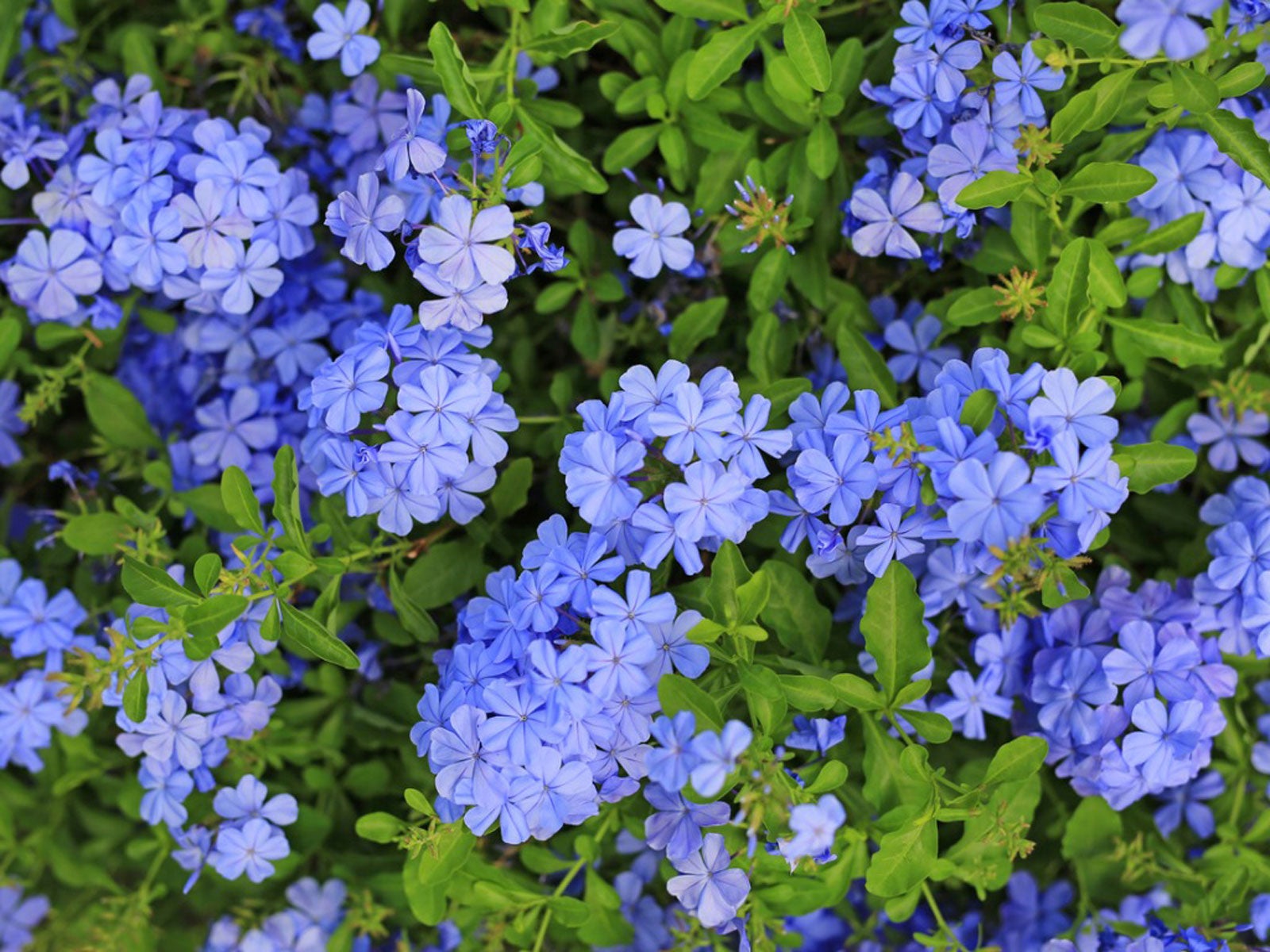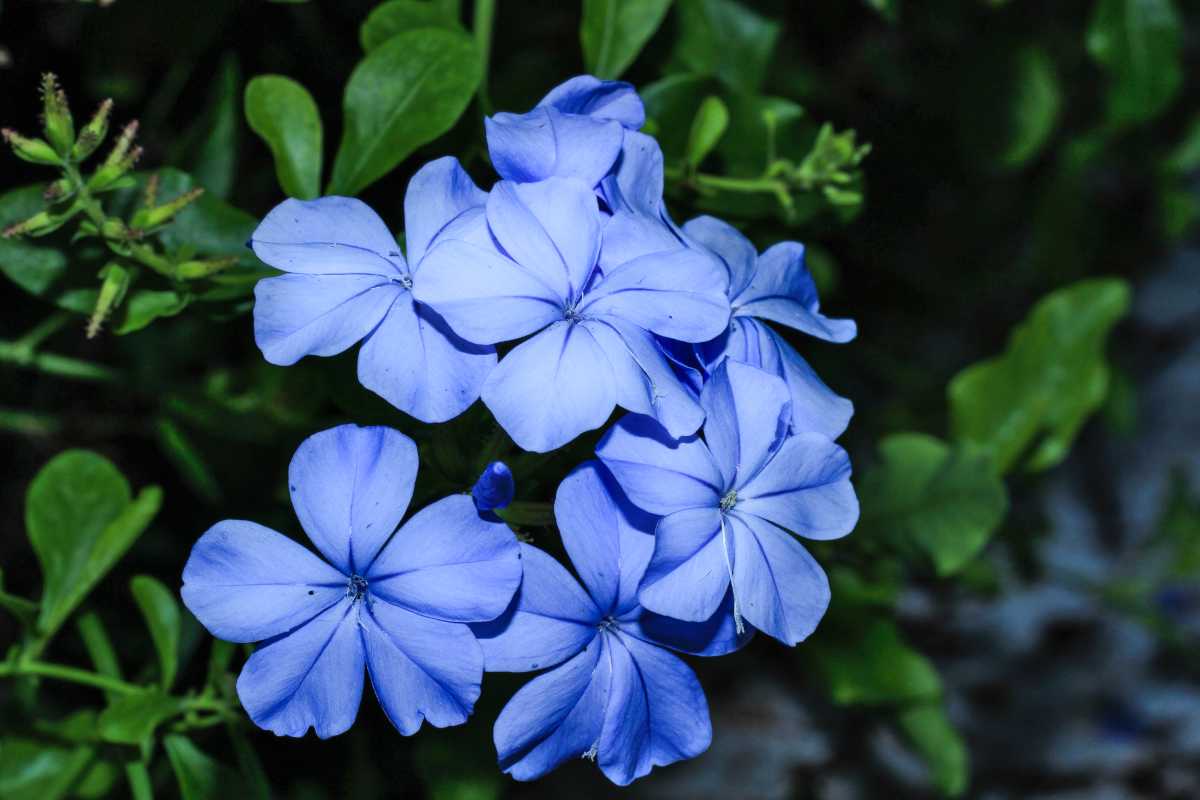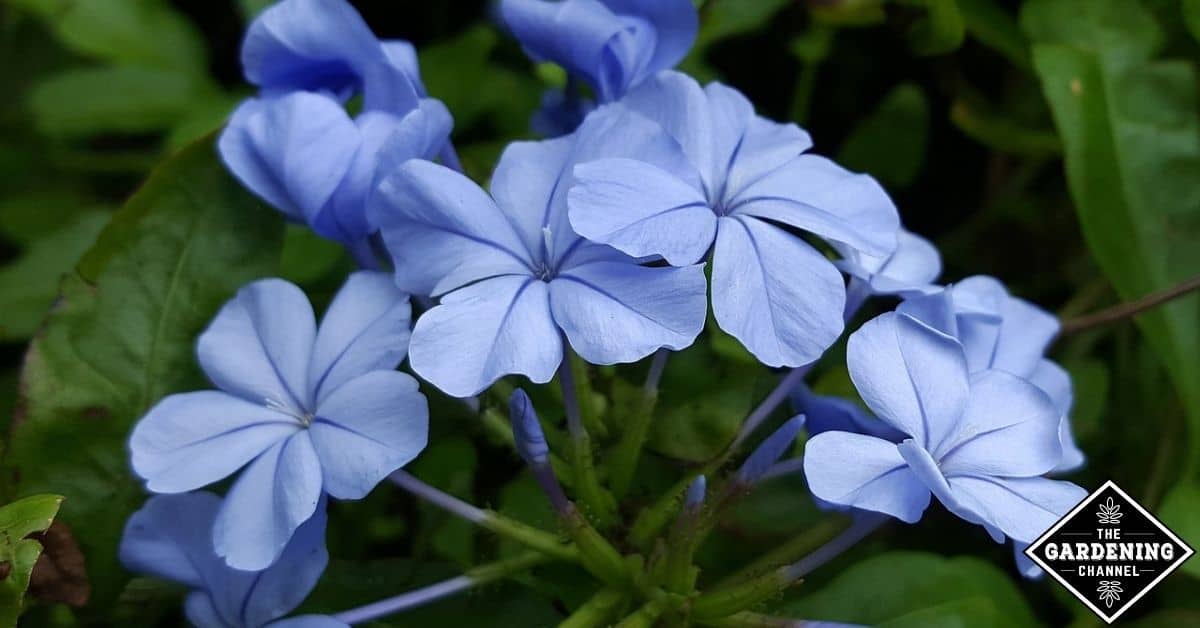Before I tell you more about this gorgeous-looking flowering plant called a plumbago and its care instructions, I should point out that there are more than 18 different species of plumbago, which are members of the Plumbaginaceae family, sometimes referred to as the leadwort or plumbago family. The majority of the plants in this category are perennial, which means they return year after year. The name of the group comes from the Latin phrase “plumbum agere,” which means “cause to resemble.” The warm tropical regions of South Africa, South America, Madagascar, Costa Rica, etc. are where these plants originally came from.
Table of Contents
How to Grow Plumbago
There are many places where you can grow plumbago, and they can readily thrive there. Growing plumbago is extremely simple.
Depending on the type, plumbago grows in USDA Zones 9 to 11, whereas Cape leadwort is hardy in Zones 8 to 11. This shrub may thrive in any setting and a gardener won’t have any trouble cultivating it because it needs plenty of space to expand.
The greatest period to grow plumbago is from the beginning of November to the end of March, when it is winter and you can keep it inside and place it in a bright area. When the heat is sufficient, which is in June, July, and August, you can also cultivate them during the summer. The vivid color relies on the environment, how well it receives light, the soil quality, and the frequency of watering.
If you didn’t already know, these flowering plants are actually frost-free and capable of remaining green for the majority of the year.
Yes, this plant can struggle in the cold, but they have survived freezing temperatures and have bloomed brilliantly at the beginning of spring.
Growing them in a garden may draw butterflies and birds since they have a pleasant aroma. And from spring to October, you’ll probably notice blossoming, which is perhaps when the plant looks its best. People also enjoy growing them on balconies, so having one of these varieties will help you since it can withstand more extreme weather.
Plumbago Care
Light
Plumbago may be planted in either full sun or moderate shade, and it tolerates both. However, in the gloomy region, you may not obtain many blooms because blossoming requires light and energy to make blossoms.
Water
Once winter arrives, you should minimize watering but don’t stop, and basically what I did is – In summer or winter I must check the top soil for dry since it eliminates any concerns related to root rot. Plumbago is likely to grow best if you water it regularly from spring through fall.
Soil
The plumbago plant prefers fertile, well-drained soil that drains water quickly and should be a little acidic potting soil. The best potting mix for blooms and colors was Miracle Gro.
Temperature
They can tolerate sunshine so easily that they can develop, but you must water them properly when they do. The ideal temperature for this plant to flourish in the summer is between 64 and 69 degrees Fahrenheit, with a lower limit of 40 to 50 degrees Fahrenheit.
Humidity
Plumbago grows best when you give it frequent waterings and mist it with water because these plants prefer humidity and damp environments. Use a dish or saucer and fill it with water and some pebbles. Your home becomes the perfect humidity environment for this plant.
Height
When planted in a container or pot and if not pruned early, they can easily reach a height of roughly 1.2 to 2 meters.
Growth Rate
The basic growth rate for plumbago would be between 55 and 70 cm or more each year, depending on the temperature, sunlight, and fertilizer. If it isn’t pruned, it could take up room for other plants, but you can easily prune it, so don’t worry.
Is Plumbago an invasive plant?
Plumbago is an excellent shrub plant that expands, but not so much that you need to call for assistance, therefore it is not an invasive species. It will not suddenly spread like a honeysuckle, but it is in your direct line of sight and you can easily find time to prune it. The blue flower is an exotic flowering plant that will also give you the benefit of checking it out.
Propagation
The fastest way to propagate plumbago is by stem cutting, but seeds can also be planted at the end of fall when the colder weather starts. Cutting can be done in the summer since this is when the plumbago flowers the most.
Pruning
Plumbago trimming is done to safeguard the other plants because it can swiftly encroach onto the gardening space. Additionally, plumbago grows healthily if you prune it and keep it at the proper size and shape.
You can prune the entire bottom third of the plant as well because it can withstand weighted pruning, but I encourage you to just remove stems that are getting large and diseased or that are overgrown. Its leaves and general growth will be impacted by cutting every month or less.
The Best Pruner for Cutting Plumbago is Listed Here – See Amazon Price.
Plumbago Auriculata for sale
Check Amazon Prices
Check the cost on Etsy
(Fertilizer)How do you keep plumbago blooming?
To maintain plumbago blooms, use a decent fertilizer or plant food. Applications can be made every 14 days, or you can refer to the directions for spring and other seasons. Give this fertilizer only during the growing or blooming seasons.
I used Jack Blossom Plant Fertilizer by J R Peters.
Most Searched Queries:
Plumbago Leaves Turning Yellow
The chlorosis, which results in the loss of the typical green color of the leaves, and iron deficiency may be to blame for the yellowing of the plumbago leaves. This iron-acid fertilizer can help you with the issue.
How to Propagate Plumbago
Stem cutting and root propagation are the two most effective ways to multiply plumbago. Simply cut a healthy stem that is 4-5 inches long, remove the lowest 2 inches of the plumbago leaves, and then apply rooting hormone to the stem base. Now, moisten this cutting and place it in new potting soil. You will observe some root development in a few weeks.
Although I wanted to include everything in this article, I felt that doing so would be confusing. Instead, I explained the three ways to verify the plumbago propagation.
FAQ’s
Plumbago is pruned to maintain its general health, appearance, and ability to blend into the landscape or garden. The blue and white blossom, which contains nectar, does draw butterflies, but it is not good for bees in Florida or California. To get rid of pests and diseases, prune it to around two-thirds of its original size. Pruning a plumbago during the growing season will instantly stimulate new growth.
Does plumbago come back every year?
Most people believe that this plant needs to be pruned after it has bloomed; however, the plant really prunes itself. Otherwise, trim it heavily if it has grown out of control and remove any old, diseased stems. Don’t worry; it will grow back in the spring to fall of the next year.
Why is my blue plumbago dying?
Plumbago plants are susceptible to frost death, and daily watering throughout the winter will destroy their roots because there is no air left in the soil, only water. Make a note of this and keep it in mind over the winter because rotting roots will result in yellow to brown leaves; otherwise, the plant will thrive with less watering.



